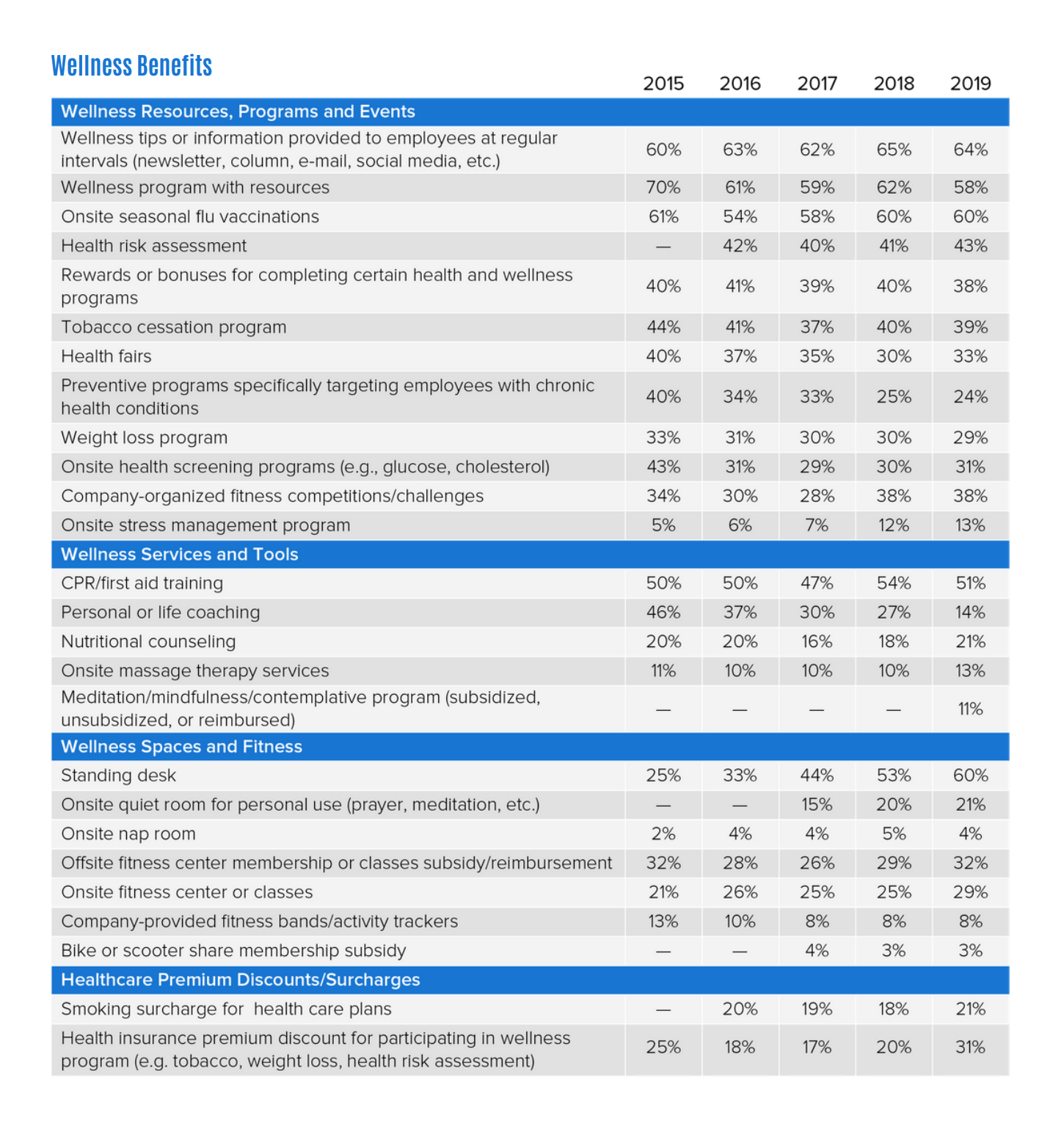As companies develop their wellness offerings, leaders may wonder how their benefits compare to those from other companies, what initiatives are trending, and what areas to focus on in the future. Fortunately, the Society of Human Resources Management (SHRM) published the 2019 Employee Benefits Survey, which examines the 250 benefits companies are most likely to offer. The report provides a great benchmark for what comprises a competitive benefit package as well as what emerging offerings are gaining traction. It is important to note that a competitive benefit package will depend on the organization, the demographics of their employees, and the industry in which they operate.
Benefits Still Viewed As Essential
Overall, businesses still see benefits as a differentiator when it comes to recruiting and retaining employees. With a tight job market, no more than 3% of companies decreased benefits in any category, compared with 20% of companies that increased health related and wellness benefits since 2018.
Although wellness benefits increased the same as health-related ones, growth in these benefit skewed toward larger companies. A quarter of employers with 500 or more employees increased wellness benefits over the past year while only 13% of employers with fewer than 99 employees increased them.
What’s New With Wellness
Overall, wellness programs had few broad changes. Fifty-eight percent of organizations offer general wellness programs, but traditional activities, such as programs that target employees with chronic health conditions, have decreased since 2015, from 40% to 24%. Health insurance companies are providing some of the traditional wellness benefits, which allows companies to offer more niche activities that better match their employee demographics.

- Standing desks are now offered by 60% of organizations, up from 25% of companies five years ago. As wellness programs focus on the adverse impacts of sitting, it is no surprise that equipment that helps employees avoid sitting for prolonged amounts of time during the day is gaining traction.
- Onsite lactation rooms are rising in popularity, with 51% of companies offering them in 2019, compared with 35% in 2015. Companies committed to diversity and inclusion can use lactation rooms as one method to support employees who are new mothers.
- Stress management continues to receive attention as leaders look for ways to help employees avoid burnout. Thirteen percent of companies offered onsite stress management programs in 2019, up from 5% in 2015.
- Flexible work schedules have become common. Fifty-seven percent of organizations let employees choose their work times within core business hours, and 29% allow employees flexibility outside of core business hours. With even more flexibility, telecommuting, especially part-time, has increased for companies of every size, with 40% offering part-time telecommuting, 25% offering full-time telecommuting, and 69% offering telecommuting on an ad hoc basis. As more employees seek to balance work and life responsibilities, the employee demand for less structured schedules and more remote working opportunities is expected to continue.
- Paid leave for new parents remained the same from previous years, with a slight uptick in paid paternity leave. Companies offer a combination of paid maternity, paternity, and family leave, and these benefits are expected to continue. Employees with children are expected to request expansions of maternity and paternity leave, and employees with aging parents are expected to seek more family leave provisions.
- Company provided student loan repayments are on the rise, doubling from 4% in 2015 to 8% in 2019. This move indicates companies recognize financial health as a component of wellness and identify loan repayments as a significant stressor to employees who have student debt (from their own education or from their children’s).
Although wellness changes this year haven’t been groundbreaking, they do touch on every aspect of an employee’s life, from the equipment used to where and when work gets done. Companies are considering employees’ physical, mental, and financial health when planning wellness initiatives. Perhaps most importantly, companies are refining their wellness offerings to ones that most clearly address their employees’ pain points.












